ART CITIES: London-Erwin Wurm
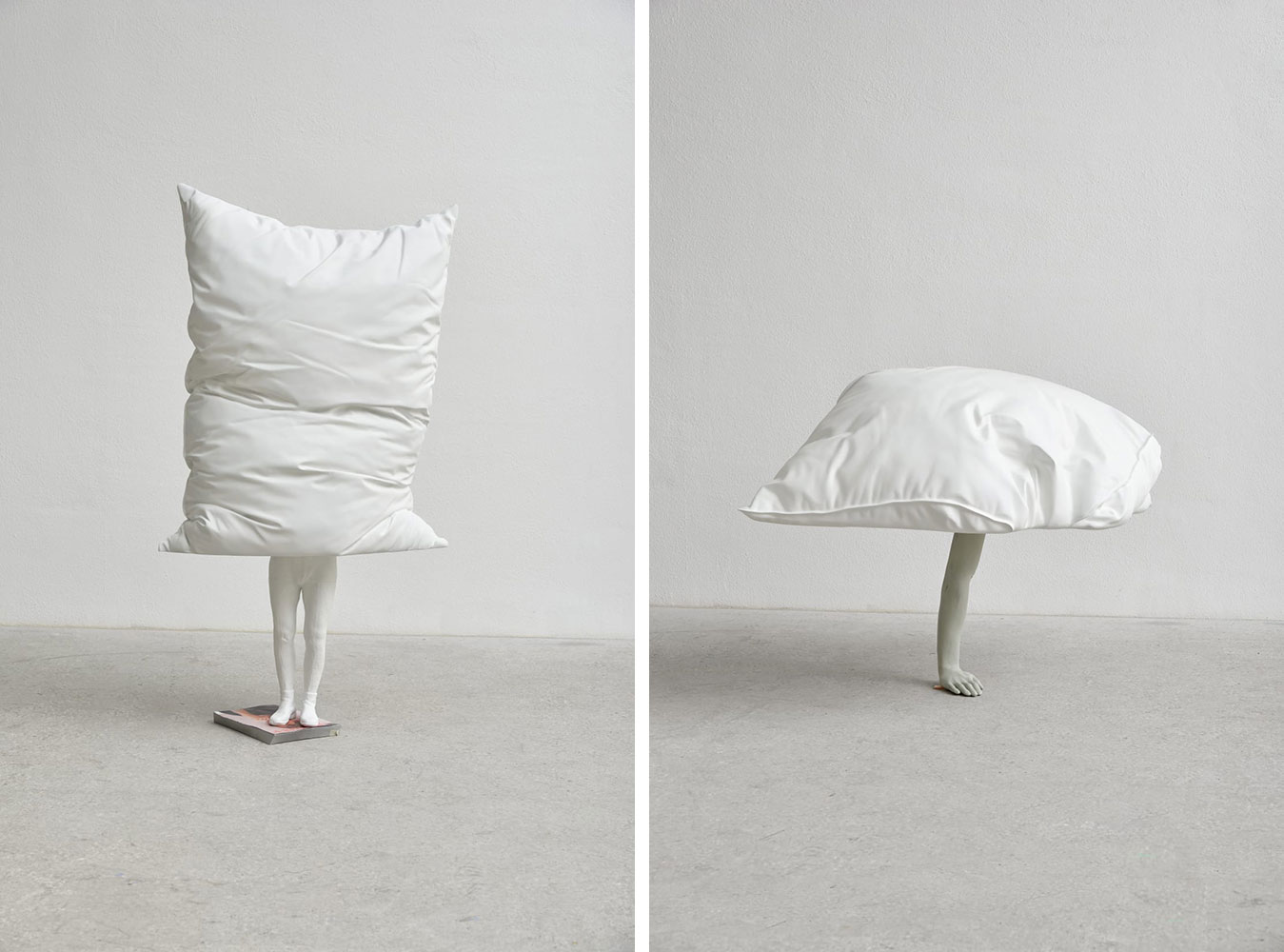 Over the course of his career, Erwin Wurm has radically expanded conceptions of sculpture, space and the human form. His sculptures straddle abstraction and representation, presenting familiar objects in a surprising and inventive way that prompts viewers to consider them in a new light. He often explores mundane, everyday decisions as well as existential questions in his works, focusing on the objects that help us cope with daily life and through which we ultimately define ourselves. These include the material objects that surround us – the clothes we wear, the cars we drive, the food we eat and the homes we live in.
Over the course of his career, Erwin Wurm has radically expanded conceptions of sculpture, space and the human form. His sculptures straddle abstraction and representation, presenting familiar objects in a surprising and inventive way that prompts viewers to consider them in a new light. He often explores mundane, everyday decisions as well as existential questions in his works, focusing on the objects that help us cope with daily life and through which we ultimately define ourselves. These include the material objects that surround us – the clothes we wear, the cars we drive, the food we eat and the homes we live in.
By Dimitris Lempesis
Photo: Thaddaeus Ropac Gallery Archive
In his solo exhibition “Surrogates” Erwin Wurm, presents three series of works shown for the first time: “Paradise”, “Mind Bubbles” and “Dreamers”. On view concurrently with the artist’s major institutional survey at Yorkshire Sculpture Park in Wakefield the exhibition features painted metal and epoxy resin sculptures, alongside key developments in the continuation of his iconic “One Minute Sculptures”. Together, the works assembled embody Wurm’s characteristically expansive approach to the concept of sculpture as he disrupts traditional distinctions between subject and object, the human and the non-human, spectator and participant. Clothing has been a key source of inspiration for Wurm since the late 1980s, when an abundance of second-hand garments near his then-studio prompted an extensive experimentation with worn objects that continues today. ‘Clothes are our second skin, a shell that separates our bodies from the outside world,’ he says. Coupled with his investigation into the ways in which volume might be articulated, as inspired by his observation that classical bronze sculptures are hollow, this statement led to the formation of works using thin, skin-like membranes of painted aluminium, as represented in the exhibition by his “Substitute” series (2022– ). The “Substitutes” appear as disembodied figures, composed solely from hollow aluminium garments arranged as though worn by a body that is curiously absent. In an inversion of the volume added to the shoe in the “Paradise” series, the garments are deflated. Their ‘skin’ separates the hidden, internal volume of the sculpture from the external space in which they stand. The garments, poses and (often monochromatic) color palettes highlight the particular social values we might ascribe to what an individual chooses to wear. The sculptures become ‘substitutes’ or ‘surrogates’ for the human body, whose volume, mass and form are defined by the ‘second skin’ of the aluminium clothes. As is characteristic of Wurm’s practice and encapsulated in the exhibition title, “Surrogates”, this idea of substitution acts as a social commentary that cuts through the artist’s often humorous treatment of the objects and rituals of everyday life. He conceives of the disembodied Substitutes as a way to call attention to the role of the individual in the rapidly changing social, political and environmental conditions of the contemporary world, and particularly the potential absence of humanity in post-anthropocentric futures. Asserting his investigative approach to the concept of sculpture within art historical traditions, elsewhere in the exhibition Wurm uses clothes to build bodily forms in response to two canonical works of art: Donatello’s “Penitent Magdalene” (1440) and Auguste Rodin’s “Monument to Balzac” (1891–97). Wurm explains that with “Balzac” (2023) “I wanted to create a figure where you cannot see a human being but you get this idea of a person” emerging from the piled clothes and designer bags. Titled following his observation that the sculpture evoked the semi-abstract monolith of Rodin’s homage to the French novelist Honoré de Balzac, Wurm was inspired by the myth that the French sculptor soaked the writer’s dressing gown in plaster to dress his monumental form. Similarly, “Repentance (After Donatello)” (2023) emulates the folded robe that enshrouds the emaciated body of Mary Magdalene in the Italian Renaissance sculptor’s wooden original. Rendered in painted aluminium, the cascade of pale-pink, knitted jumpers is finished with a pair of white trainers standing atop a bucket. As with the Substitutes, the two sculptures reimagine the human body as an absurd configuration of clothing, responding to the central issue of self-representation in contemporary society. Addressing another aspect of the human condition, the “Dreamers and Mind Bubbles” (both 2024) give form to psychological thought through bodily associations. In the “Dreamers”, realistic human limbs suspend oversized white pillows above them in a playful reference to the unconscious. “Turning our reality upside down” through his absurd fusion of bodies and pillows, Wurm evokes the writing of Austrian psychoanalyst Sigmund Freud and The Interpretation of Dreams (1899). In turn, the “Mind Bubbles” place ovular forms atop spindly, cartoonish legs in anthropomorphic imaginings of the thought bubbles found in comic strips. Wurm describes them as ‘a symbol of an idea or a specific thought, which is not described’. Building upon his earlier “Hypnosis” series (2007–08) in which the potato-like forms have realistic human legs, the aluminium sculptures evoke conscious thought. They gesture to the cerebral aspect of his participatory works, in which he often asks individuals to reflect upon their own mental states or the theories of great philosophers as they perform a prescribed action. These new series of works are presented alongside a group of the artist’s “One Minute Sculptures”, which epitomise his innovative approach to time-based, participatory sculpture. Begun in 1996–97, they consist of written or drawn instructions that are typically performed by individuals on a plinth for up to one minute. Often incorporating everyday objects, they transform the visitor from spectator into participant, destabilising traditional modes of engaging with art. Installed in Ely House, what Wurm describes as a ‘new chapter’ of the “One Minute Sculptures” marks a key evolution in the series. Abstract sculptural elements are introduced to each work, which remain present even when they are not activated by a participant. Giving the works new life outside the temporal duration of their performance, this development demonstrates Wurm’s enduring impetus towards artistic evolution, which he has sustained throughout his long and successful artmaking career.
Photo left: Erwin Wurm, Dreamer, 2024, Aluminium, paint; 45kg, 150 x 80 x 40 cm (59.05 x 31.49 x 15.74 in), © Erwin Wurm, Courtesy the artist and Thaddaeus Ropac Gallery. Photo right: Erwin Wurm, Dreamer, One Arm, 2024, Aluminium, paint; 42kg, 92 x 148 x 93 cm (36.22 x 58.26 x 36.61 in), © Erwin Wurm, Courtesy the artist and Thaddaeus Ropac Gallery
Info: Thaddaeus Ropac Gallery, Ely House, London, 37 Dover Street, London, United Kingdom, Duration: 15/2-14/4/2024, Days & Hours: Tue-Sat 10:00-18:00, https://ropac.net/
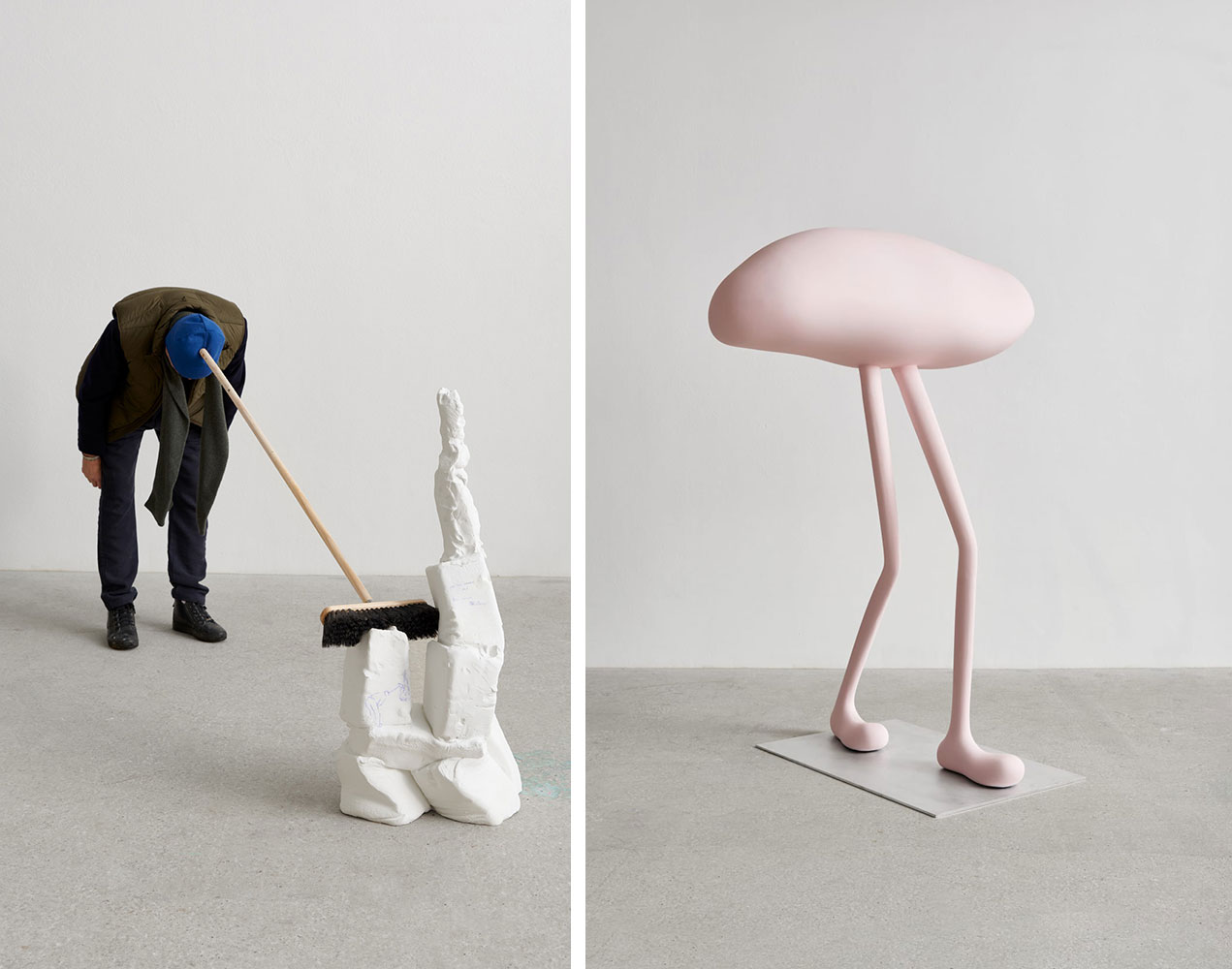
Right: Erwin Wurm, Mind Bubble Walking Pink, 2024, Aluminium, paint; 200 kg, 230 x 165 x 125 cm (90.55 x 64.96 x 49.21 in), © Erwin Wurm, Courtesy the artist and Thaddaeus Ropac Gallery
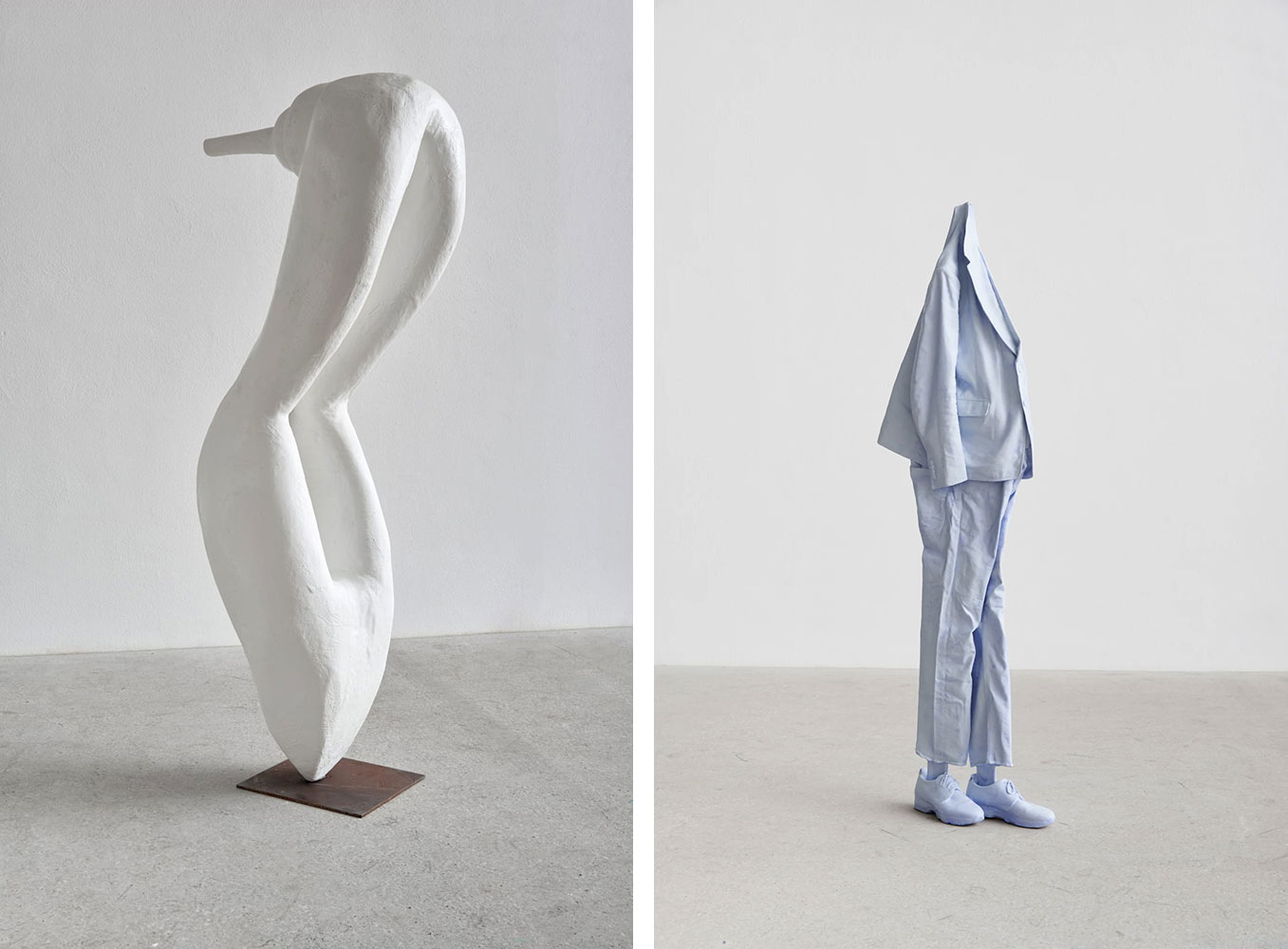
Right: Erwin Wurm, Straight Blue (Substitutes), 2024, Aluminium, acrylic paint; 53kg, 190 x 22 x 60 cm (74.80 x 8.66 x 23.62 in), © Erwin Wurm, Courtesy the artist and Thaddaeus Ropac Gallery
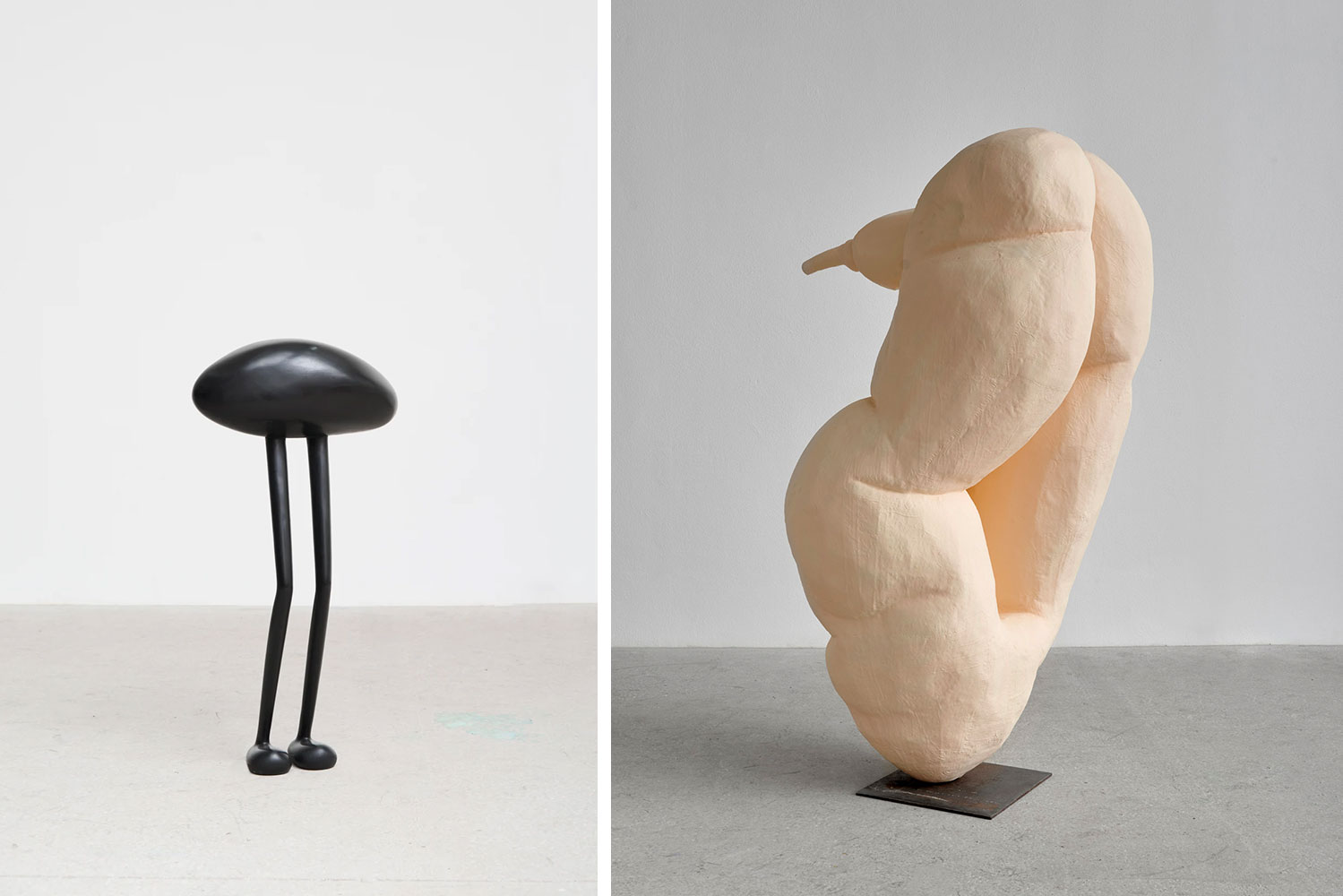
Right: Erwin Wurm, Paradise I (Idea of a High Heel Big), 2024, Steel, epoxy resin, styrofoam, acrylic; 65 kg, 217 x 110 x 140 cm (85.43 x 43.30 x 55.11 in), © Erwin Wurm, Courtesy the artist and Thaddaeus Ropac Gallery
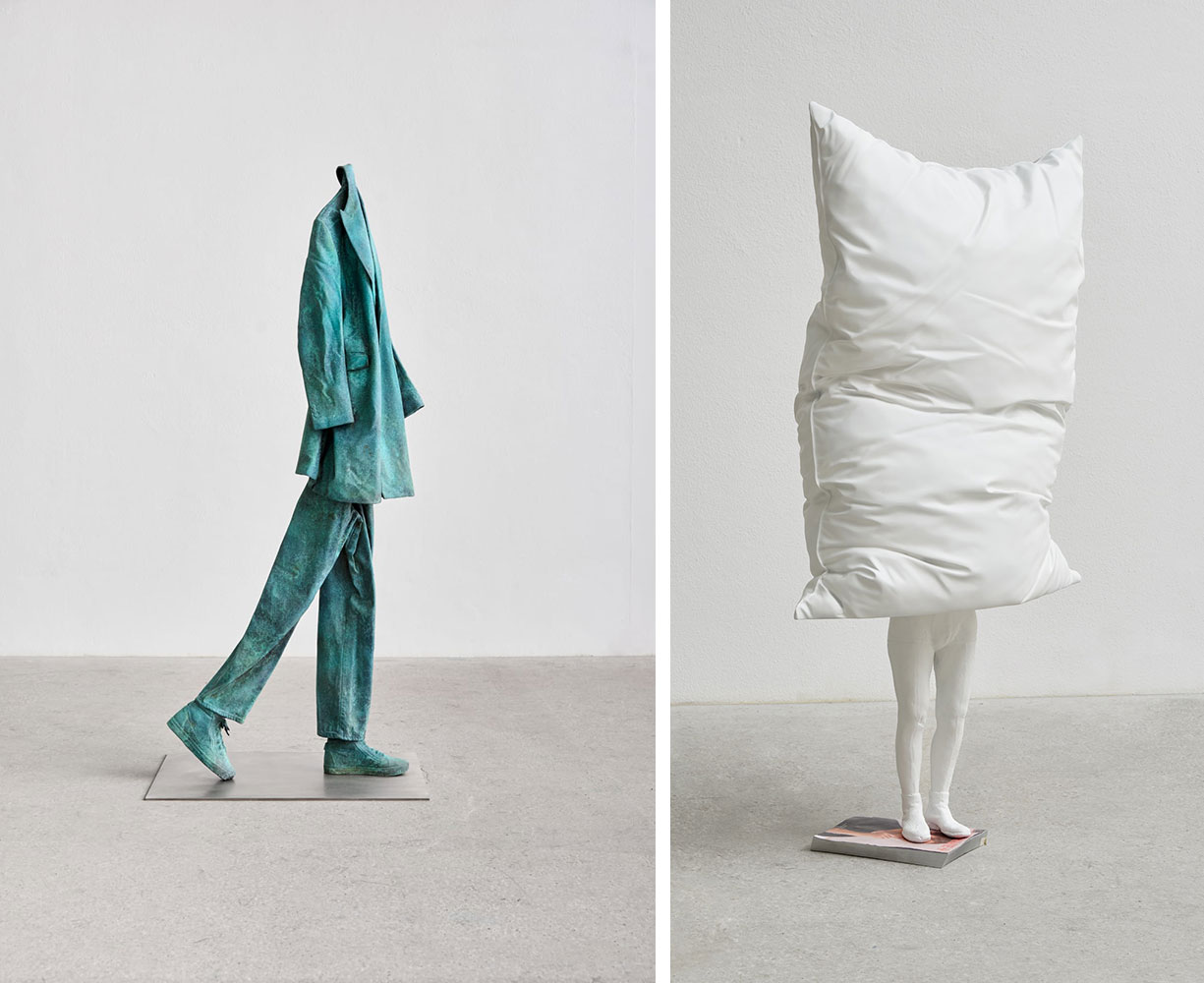
Right: Erwin Wurm, Dreamer, 2024, Aluminium, paint; 45kg, 150 x 80 x 40 cm (59.05 x 31.49 x 15.74 in), © Erwin Wurm, Courtesy the artist and Thaddaeus Ropac Gallery
